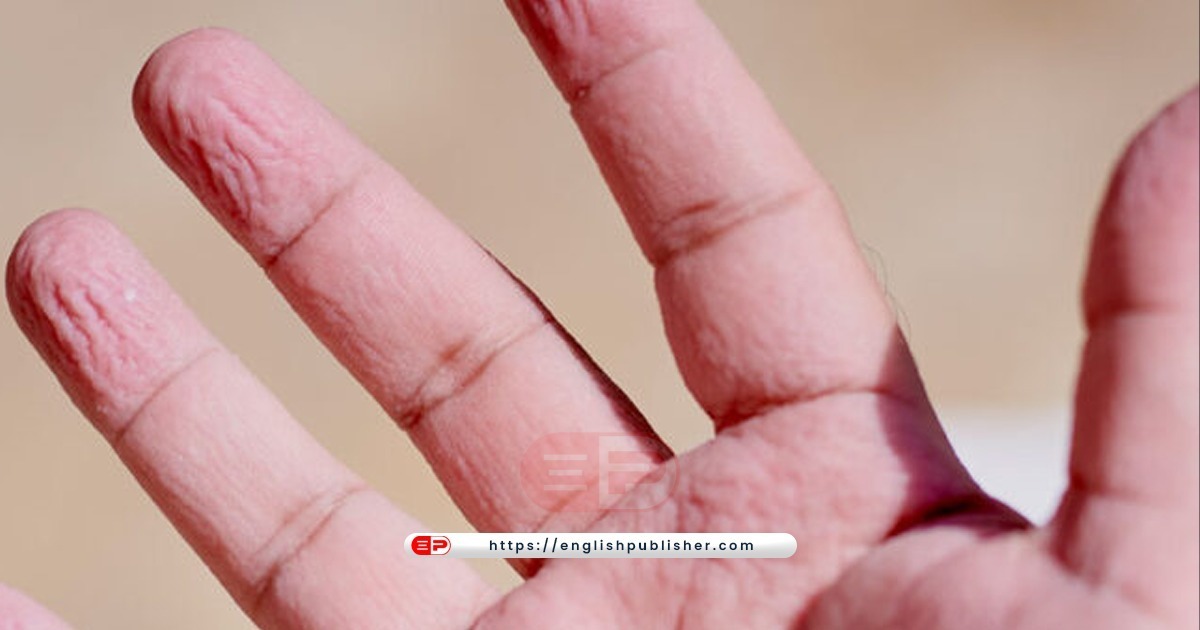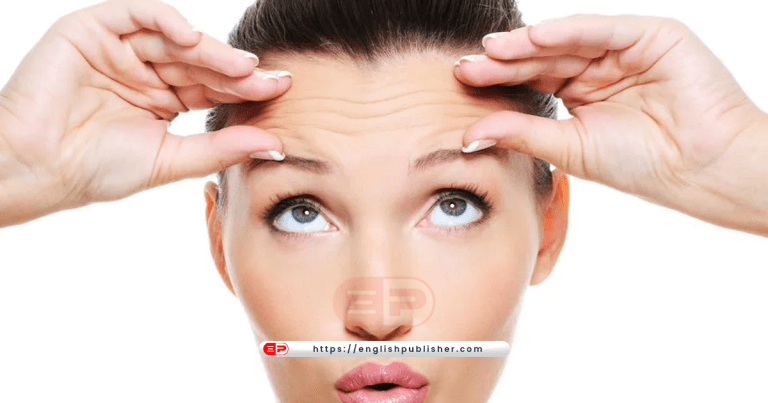If you spend a certain amount of time in water, the skin of your toes undergoes a surprising change. Where previously there were delicate wrinkles on the fingertips, the same area turns into ugly layer upon layer of wrinkles.
We are all aware of this amazing change, but still it is beyond comprehension. The strange thing is that this happens only with the skin of the hands and toes, while other parts of the body like the stomach, legs, face or even the wrist remain the same despite being in water.
Scientists have been trying to solve this physical puzzle for decades. Most have been trying to figure out why, but in recent years their focus has shifted to the question of what the purpose or benefit of this change is.
Perhaps an even more important question is what these changes in our skin tell us about our health?
Wrinkling in water at temperatures up to 40 degrees Celsius takes three and a half minutes, while in cold places it can take 10 minutes at temperatures up to 20 degrees Celsius. According to most researches, most of the skin’s wrinkling process is completed within 30 minutes.
It was commonly believed that toe wrinkling was a simple reaction, during which the outermost layer of human skin swells due to water entering through osmosis, but as early as 1935 scientists suspected that It is not so simple.
Medical experts tested that the fingers of patients who had their median nerve severed due to injury did not develop wrinkles. It is an important vein that runs from the arm to the hand and also has a function in controlling processes such as sweating and constriction of blood vessels.
The most important aspect of this discovery was that water-induced wrinkling of the fingertips is actually a process controlled by the human nervous system, the brain.
Further research into the matter in the 1970s found more evidence. Doctors also suggested simple tests in which hands were dipped in water to check if any veins were affected, which could affect blood flow.
In 2003, neurologists Einar Wilder-Smith and Adeline Chow, who worked at the National University Hospital in Singapore, asked volunteers to dip their hands in water and took blood samples.
They discovered that as the volunteers’ skin became wrinkled, blood flow to their fingers decreased.
They then used a cream that temporarily constricted the blood vessels in the finger and found that it had the same effect as putting your hand in water on the skin. .
Nick Davies, a neuroscientist and physiologist at Manchester Metropolitan University, says: ‘When the skin on the finger wrinkles, it turns yellow because the blood on the surface is reduced.’
After the experiment of Wilder-Smith and his colleague, they believed that when we dip our hands in water, the pores in the fingers, which secrete sweat, open up and let the water in, causing the saline solution. Disorder occurs.
This salt imbalance causes a signal from the brain that sends a message to the veins in the fingers to temporarily constrict the blood vessels. Due to this process, there is a loss of blood in the fingernails, after which the outer surface of the skin pulls into the spaces created by the lack of blood and takes the form of wrinkles.
“If the brain is controlling this process, it means our body is responding to being in water,” says Nick Davies. This means that this process is not without reason and also that this process is beneficial for us.
Nick Davies was once asked by his son in the bath why wrinkles appear on the skin, after which he decided to investigate this question.
In 2020, they recruited 500 volunteers visiting the London Science Museum to test how much force they needed to grip a plastic object.
They discovered that people with more wrinkled fingers needed more strength, while people with dry hands had a better and stronger grip.
“The results were surprisingly clear,” says Nick. Wrinkling (the process of wrinkling the skin) increases the friction between the fingers and the object. What is quite interesting is that our fingers are sensitive to this change and taking advantage of this knowledge we use less force to hold anything securely.’
The object that Nick Davies gave the volunteers weighed less than a few coins and required a relatively small grip, but if it was a demanding task underwater or in a wet environment, the difference in friction would be significant. becomes prominent.
“If you don’t have to clench your fist hard to hold something, then the hand muscles are less fatigued and you can hold the grip for longer,” he says.
The results of Nick Davies’ research are consistent with other efforts that show that wrinkled fingers make it relatively easier to grip a wet object.
In 2013, a team of neuroscientists from the University of Newcastle in the United Kingdom asked volunteers to move a few objects from one container to another during an experiment. These were glass tablets and fish weighing bars. Once dry and the other time these items were present at the bottom of a container filled with water.
The experiment found that volunteers with unwrinkled fingers took 17 percent longer to move objects submerged in water, but with wrinkled fingers they moved objects 12 percent faster.
Surprisingly, there was no difference in the transfer performance of dry goods with or without wrinkles.
Some scientists believe that the wrinkles on the toes act like a gap in a car tire or the bottom of a shoe to allow water to pass through. The presence of these wrinkles creates a gap that reduces the presence of water between the fingers and any object.
It can also be concluded that human feet and fingers evolved over time to allow us to grip wet objects or surfaces.
Tom Smulders is an evolutionary neuroscientist who led a 2013 experiment at Newcastle University.
“Because it gives better grip in water, I think this evolution is also related to splashing on objects underwater or moving on a wet surface,” he says.
This process of wrinkling may have helped our ancestors walk on wet rocks or grip branches, or alternatively, it may have helped them hunt marine organisms.
Tom Smulders says that “if the latter is the case, perhaps this change is limited to humans, and if it is the former, then it is possible that this change has also occurred in monkeys and gorillas.”
Until now, this skin change has not been seen in animals considered to be the closest to humans, such as chimpanzees, but Japanese macaque monkeys, which bathe in hot water for long periods of time, develop similar water wrinkles on their toes.
According to Tom Smulders, the absence of evidence of this change in other primates does not mean that it does not occur in them, but may be because no one has observed it until now. “We don’t know the answer to this question yet,” he says.
When did this change occur in man? There are a few clues related to this question. Water ripples on toes are more noticeable in salt water than in fresh water. This is probably because brackish water does not affect the salinity setting as much. So perhaps it was this change that helped our ancestors to live in a freshwater environment rather than a coastal one.
But so far there is no concrete answer to this question and few believe that it may be just a coincidental physiological response rather than an evolutionary change.
Surprisingly, there are many more puzzles associated with this question as the process of wrinkling in women takes longer than in men.
And then the question of how our skin recovers to its original state after a gap of ten to twenty minutes, while there is apparently no harm in holding a dry object with wet fingers? If the wrinkles of wet fingers improve grip in water and do no harm in dry conditions, then why are the membranes of our toes not permanent?
One of the reasons for this could be the sensitivity of the skin because the tip of our finger is full of sensitive nerves and as the condition of the skin changes, so does our ability to feel touch.
Nick Davies says ‘Some people are irritated by wet finger wrinkles because they find it awkward to hold something in such a condition. It can also be psychological. It will also be interesting to investigate. Besides, there may be tasks that we can do less well with wrinkled fingers.’
But this change can also provide surprising information about our health. In people with skin conditions like psoriasis or vitiligo, this process takes longer. In patients with cystic fibrosis, wrinkles appear on the fingers as well as on the palm. It is also less common in patients with type 2 diabetes and heart disease.
A study of people who have more wrinkles on one hand than the other suggests that this could be a sign of the onset of Parkinson’s disease because it means that their nervous system in one part of the body is damaged. I am not working properly.
So while it’s still a question of why wrinkles appear on the fingers in water, this change is also providing medical experts with some surprising information.

